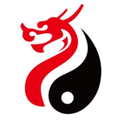
Click the above “Longmen Medicine” to follow us!
In clinical practice of Traditional Chinese Medicine (TCM), in addition to precise differentiation and treatment, how to maximize the use of prescriptions and medications is an art, a skill, and the highest pursuit of TCM practitioners. Therefore, “half a day in clinical practice, half a day in study” is particularly important. Learning from the discussions and prescriptions of TCM masters, and repeatedly pondering them, will surely yield personal insights. TCM is vast, and one must proceed step by step, learning with a method. This article will explore the treatment of damp-heat syndrome in the middle jiao (zhong jiao) based on the methods of Chen Chaozu.
Overview

Damp-heat in the liver meridian refers to pathogenic factors from external invasion and internal injury leading to liver qi stagnation and transformation into fire disease. Clearing and draining liver heat is the treatment method based on the pathogenesis of damp-heat in the liver meridian.
Indications

Common symptoms of liver meridian excess heat include intense heat causing mania, headache, dizziness, red eyes, tinnitus, deafness, hypochondriac pain, jaundice, and yellow urine. Symptoms such as red, painful, and dry genital discharge, dampness and itching of the scrotum, and swelling are the main manifestations; bitter mouth, red tongue, yellow coating, and wiry rapid pulse are the diagnostic criteria indicating heat pathology.
Pathological Analysis

This syndrome may arise from the transmission of pathogenic factors to the shaoyang (少阳) and jueyin (厥阴) channels, causing qi stagnation to transform into heat; or due to great anger causing qi to rebel, leading to qi stagnation transforming into fire, which ascends and causes mania, headache, dizziness, flushed face, red eyes, tinnitus, and deafness; obstruction of the meridians leads to hypochondriac pain and bitter mouth; liver and gallbladder heat stagnation causes bile to flow with fluids, unable to drain, obstructing the shaoyang sanjiao (三焦), resulting in jaundice; if liver and gallbladder damp-heat descends to the lower yin, it presents as yellow, painful, and dry urination, thick, sticky, foul discharge, dampness and itching of the scrotum, and swelling. The above symptoms are biased towards the shaoyang sanjiao qi level, with fluids not harmed, often presenting as damp-heat; if yin fluids are damaged, tendons and meridians lose moisture, it may present as internal wind of the liver; if heat is in the blood level, it often forces blood to move erratically. Thus, liver heat symptoms can reflect pathological changes in qi, blood, fluids, and tendons.
Formulation and Treatment Principles

When liver heat is present, it must be cleared and drained, but care should be taken to guide the pathogenic factors outward, achieving twice the result with half the effort, without excessively using cold and cool substances that may harm vitality. Therefore, this method often employs herbs such as Long Dan Cao (Gentian Root), Zhi Zi (Gardenia), Huang Qin (Scutellaria), Qing Dai (Indigo), and Mu Dan Pi (Moutan Root) as the main bitter-cold herbs; or it may be supplemented with Chai Hu (Bupleurum), Qing Hao (Artemisia), Zi Su (Perilla), and Bo He (Mint) to help release heat from the shaoyang to the exterior; or combined with Fu Ling (Poria), Ze Xie (Alisma), Yin Chen (Artemisia), Hua Shi (Talc), Mu Tong (Akebia), and Che Qian Zi (Plantago) to promote dampness and guide heat downward from the sanjiao; or combined with Lu Hui (Aloe), Da Huang (Rhubarb), and Mang Xiao (Mirabilite) to promote bile and clear the intestines, guiding heat downward from the gallbladder. Since the liver governs the rising and dispersing of qi, it is prone to stagnation and loss of its normal rising and dispersing functions; the liver is also the organ that stores blood, and the liver’s connective tissues require yin fluids for nourishment. Liver heat easily depletes blood and injures yin, so this method often combines Chai Hu, Xiang Fu (Cyperus), Zhi Ke (Bitter Orange), Mu Xiang (Saussurea), and Yu Jin (Curcuma) to soothe the liver and regulate qi; Sheng Di Huang (Rehmannia), Shao Yao (Peony), and Dang Gui (Angelica) are used to nourish blood and regulate the liver, collectively achieving the effect of clearing liver heat and draining fire.
The above combinations reflect two basic characteristics: first, the selection of herbs is based on the depth and location of the heat pathogen; second, it considers the various physiological functions of the liver. Representative formulas include Yin Chen Hao Tang (Artemisia Decoction), Long Dan Xie Gan Tang (Gentian Decoction), Zuo Jin Wan (Left Metal Pill), and Shi Jue Ming San (Stone Jue Ming Powder).
This method is limited to exploring the treatment of excess heat in the liver meridian and does not cover other aspects. Liver heat is a type based on pathology. Various dysfunctions of the liver can all present as liver heat, thus the method of clearing the liver is also a fundamental approach in treating various liver dysfunctions.

The End
References:TCM Treatment Methods and Formulas

